A couple horses of my own.

 After a wide ranging conversation with my friend, the painter David Oleski, I decided that I would put together a post on my monotype process. Sometime in the next couple weeks.
After a wide ranging conversation with my friend, the painter David Oleski, I decided that I would put together a post on my monotype process. Sometime in the next couple weeks.
Two monotypes from a variable edition completed this week. Image size 6 x 6 inches.
Dublin at One Month
Born one month ago today. His first ten days spent with pvc splints on his legs. After a slow start in life, he seems to be.......I don't really want to say, Off and Running. How 'bout, He's doing really well. Kim says he's really arrogant. The most she's ever seen.
I think he's going to be a pistol.
Second foal of the spring is due today or tomorrow.
Stone Lithography
 White Pine, 20 x 15 inches, is a straight forward drawing done with lithographic crayon on a limestone block, with some scraping back into the surface. It depicts a massive white pine along the Northville Placid Trail in the Adirondacks, and was printed in an edition of 125.
White Pine, 20 x 15 inches, is a straight forward drawing done with lithographic crayon on a limestone block, with some scraping back into the surface. It depicts a massive white pine along the Northville Placid Trail in the Adirondacks, and was printed in an edition of 125.
Printmaking is the process of producing your image in one medium - stone lithography, metal plate etching, or woodcut, and others- and inking it up and printing the image onto another surface, most often paper. My friend Tom MacPherson, who teaches printmaking at SUNY Geneseo, refers to it as art for the working man. As there are multiple copies of the image, each an original inked and pulled by the artist, they have traditionally been a more affordable medium than paintings.
In this era of electronic reproduction, laser and inkjet printing technology, traditional printmaking is a labor of love, requiring the respect of process, labor and technical knowledge. And I do love printmaking - stone lithography, etching, monotypes. I nearly gave up on it a few years ago, exhausted by the constant explanation of the processes, and why they didn’t look like my paintings, hopefully a cheaper version. Then I went to see an exhibit of Robert Marx’s etchings. I was blown away. And completely re-inspired. If at some point in the future, I have created a body of printmaking work with the power of his etchings, I think that is reason enough to continue on the path.
Stone lithography is one of the earliest forms of commercial reproduction. Apparently some years ago - like hundreds - a Frenchman was cleaning up some ink outside on a limestone walk, and noticed the old adage, oil and water don’t mix. Anyplace the stone was wet, the ink was repelled, and anyplace the the ink had touched dry stone, ink would absorb, but water was repelled. After a few generations the technique got pretty sophisticated, and up until the recent developments with laser and ink jet printing, the vast majority of commercial printing was done this way, first on limestone, and more recently metal and polymer plates.
I have to confess, the above is about the limit of my knowledge of lithography. I have a secret weapon though - my friend, the aforementioned Tom MacPherson, who I address simply as MacPherson, in my lame Scottish accent. I’ve got a question, or more likely a problem I blunder into, Tom has, or figures out, the answer.
I was writing out a lovely explanation of the whole process, and Googled levigator, and found out, hey - I love the internet. Occasionally. Anyway, here is a really lovely explanation of the whole process, handsomely illustrated, and already done. I reinvent the wheel often enough. I can still remember the joy at college graduation of the realization I would probably not have to write another research paper.
Anyway, once you have spent a few hours grinding a big hunk of limestone, you're up, with two down, bottom of the ninth. (OK, don’t get nervous, I won’t be doing a whole litany of sports analogies. I like to play, not much patience for watching and statistics.) But, there you are, about 4 or 5 hours of serious labor in prepping the stone, and you have to relax, and draw as if you have a pile of those babies laying around. Don’t tighten up like some little wooden figure and make stiff, self conscious marks. Draw fluidly, the same way you have to swing at the plate. All the practice is behind you. Concentrate, and move with sureness and confidence.

I love to draw. But it is also my fall-back. When in doubt, I render. And making pictures is full of doubt. So I am constantly battling my own tendency to render, looking for ways to broaden my statements, rather than refine them. Paint with a bigger brush, draw with scraps of cardboard. Pond at Dusk, 9 x 13 1/4 inches, was drawn in etching ink applied to the stone with various cardboard “pens” cut from mat board. The image was under and overprinted with seven silk screened colors. It depicts my most often poached fishing location from years ago. Poaching. Trespassing. A whole other subject.
The biggest problem I have with lithography is the concentration of time, labor and equipment required. It is nearly impossible to fit it in between my painting, traveling and other activities. Generally I need several days says set aside, to figure out the image, grind the stone, draw and etch the image, and then mixing ink and printing. And then the clean-up seems endless. So, though I do enjoy lithography, I have been more absorbed with monotypes lately, as I can fit in a few hours here, half a day there. And it relates more directly to my painting.
All you ever draw are horses!
Green Bull, Monotype, 6 x 6 inches
Bull.
Hooooooooooie. I slay myself! Oh, man.....wish I had that idea in time for April Fools day!
See what happens when you spend your days alone with a couple of dogs. Dogs without senses of humor. Or maybe they have highly developed senses of humor, and they don't appreciate mine. Or my lack of. Imagine poor Darby, coming home to a company starved husband. Who thinks he's funny.

Red and Orange, monotype, 6 x 8 inches
I should probably stick with making pictures. So, monotypes. The painterly arm of printmaking. With most types of printmaking the goal is to do an edition of prints that look nearly identical. The only variation between individual prints is that caused by the hand of the artist in inking and wiping the plate. The image itself is either in or on the plate, stone or board. I'll post a couple of stone lithographs next time.
 White Bull, Monotype, 6 x 8 inches
White Bull, Monotype, 6 x 8 inches
Monotypes are different. A monotype is done on a blank plate. The image is created with ink - rolled, brushed, mushed, smudged- applied to the plate in any way that seems appropriate at the moment. A damp sheet of paper - I like Rives BFK- is put over the plate on the bed of the press, and then it is cranked through the etching press. When the print is pulled from the plate, you can say, Cool, just what I was thinking, or Mmmmmmm, not quite there yet. If the former, it becomes the first in a variable edition. If it's the latter, you apply some more ink to modify the first image, lay the print down face up on the press bed, and carefully drop the plate back down into the embossment, (Darby and I are actually arguing about whether that's a word), and run it through again. And this can continue, inking, reprinting, until you are happy. And then you use the ink residue to start the back and forth conversation with the next print. No two the same. Maybe similar, but not the same.
Rusting Bull, Monotype, 6 x 8 inches
A visual, evolving conversation. Kinda like the way I paint.
One Horse, Two Horse
Stumbling along, whining.
No one ever misses the chance to tell you you can’t make a living as an artist. OK, so I ignored that. But the thing nobody tells you is how damn hard it is to keep pushing your work, to make sure you don’t just keep circling the same end of the pool, let your ideas go stagnant. There is value in working in a series, to explore the same or similar subjects, to follow a path til it runs out, or you find its end.
And then once in a while you wander off the path. And that’s the hard part. Sometimes really hard. I’ve been trying to figure out where things are going. I get a glimpse, and then I lose sight of it. All the time I spent driving the past few weeks, I was thinking about it. By the time I got home, I was good and frustrated. I may even have been feeling sorry for myself.
So, we plow through Easter weekend, lots of family stuff. Darb sneaks in a visit to the barn, and sees the first foal of the year. Wait til you see him, he’s so cute, she says.
She thinks they're all cute. Like puppies.
So I’m at the studio on Monday, head over to see him. And damn, he is so cute. And his legs are encased in pvc pipe and duct tape. ??? Turns out he came out of the oven a little early. Ten days or so. His cartilage hadn’t hardened. His ears were floppy, and his joints were flimsy. He had to have his legs wrapped to keep them in position, waiting for the cooking to finish. He couldn’t get up or down. He had to be stood up every hour to nurse from his mom. 24 hours a day. Kim or Rene or Bridgette or a few other volunteers had to be there all the time. For ten days. It all started on St. Patrick’s day, so he’s Dublin. He’s doing very well. Splints only on the front legs now. Prognosis is very good.
And I was feeling sorry for myself because I am having trouble with my thinking/conceptualizing/painting? Not so bad, really, by comparison and all. A little wake-up call is good on occasion. I wasn't even around to take an overnight shift.
I am my father’s son. Well, I hope I am anyway- he’s a really good man. But the point here is that I’m a worker, like him. Maybe too much so, on occasion. So if I can’t figure out where I’m at with some of the paintings ideas, but I want/need to work, maybe a change in media.
Printmaking is the production of an image on one surface, then printing it on another - in this case paper. I have used monotypes as a vehicle to explore and push my work before. So I decided to try it again.
I have had an idea for a series of animal images before, and this seems like a good time to get started.
Monotypes. Image size 4 x 4 inches.
Jangling
Just home from Florida, a little art selling, a little paddling, a little fishing, and a bit of beer drinking. So time for a fishing story. Sort of.
Last spring, the Cape Crusaders, a group of aging smart asses who follow the Professor around Cape Cod harassing Stripers with fly rods, were heading out for a striper jaunt. As we sailed down I-90, we crossed into Massachusetts, and the Professor yanked the rig into the first rest-stop. He sprinted, (he would call it a sprint, Magic and I would probably say fast hobble or scuttle), disappeared into the store, and came back quicker than I would have expected given his exit. He had a bag of ice in his hand. Emergency ice stop?
He reentered the van, yanked the top off the small cooler, and poured the ice over our arrival beers, saying, The jangling was driving me nuts!!!!
Jangling? I hadn’t noticed anything. I don’t think Magic had either as he burst out laughing the same time I did. Dr. Bombay and Ready Kilowatt looked puzzled.
Of course we had all regressed to approximately 8th grade, and the level of harassment and noise were - well, sustained would be a reasonable description. I hadn’t noticed any jangling.
The Professor writes code for a living. I think he even has a decoder ring. He is a problem solver. He’s really good at it. When faced with a problem, he solves it. I don’t think he can help himself. Borderline OCD. Or maybe just cloaked OCD. At any rate, he’s great company and a good friend, excellent fly tier, all ‘round mother hen and puts up with the jangling Magic and I produce. And we’ve had some great adventures. A few with problems he couldn’t solve. Swim, Professor, swim.
I grew up in a big, active, loud family. It might even have been described as jangly. I think it conditioned me early to operate in the middle of a level of chaos. I prefer fishing fast pocket water rather than spring creeks, pushy steelhead rivers rather than placid lakes, rough weather at the Cape rather than sunshine. When kayaking I will pass by a glassy surf wave to surf a big, trashy, pulsing, beast. I love Black Tongue and the Waikiki waves on the Ottawa. I did a good share of my studio projects in college on the family kitchen table, with siblings watching television, playing, harassing, hustling to finish before the table was needed for dinner. It wasn’t without a level of stress, but I got some things done. I, like anyone, can be bothered by too much distraction. But I like some jangle, probably more than just a little. NPR in the background. Music. It keeps the parts of my mind engaged and connected that might otherwise run off on their own, actually helping me focus on my work. Idle hands are the tools of..... who was it? My idle gray matter is much the same.
water rather than spring creeks, pushy steelhead rivers rather than placid lakes, rough weather at the Cape rather than sunshine. When kayaking I will pass by a glassy surf wave to surf a big, trashy, pulsing, beast. I love Black Tongue and the Waikiki waves on the Ottawa. I did a good share of my studio projects in college on the family kitchen table, with siblings watching television, playing, harassing, hustling to finish before the table was needed for dinner. It wasn’t without a level of stress, but I got some things done. I, like anyone, can be bothered by too much distraction. But I like some jangle, probably more than just a little. NPR in the background. Music. It keeps the parts of my mind engaged and connected that might otherwise run off on their own, actually helping me focus on my work. Idle hands are the tools of..... who was it? My idle gray matter is much the same.
One persons jangling is another persons texture. All the things I love to do are the things that make me feel connected to the texture of my life. Painting, drawing, making stuff, paddling, fly casting, skiing, riding, reading. Being with family, friends, the dogs. It is the feeling of connection and grounding that texture provides that make me feel part of something. It is when I am faced with just one thing, one problem I have to focus on, to the exclusion of all else, that I can get a little nuts. Like bookkeeping. As April 15th rears it’s ugly head.
Or maybe I’m just ADD. I’m really envious of the Professor’s ability to focus.
People have been given nicknames - well, not to protect the innocent, but ‘cause I can’t help myself. If you hang around with me enough, and do something revealing/notable, I’m probably gonna tag you. The only rule I have for nicknames is you don’t get to name yourself- how many Slicks do we need? And you shouldn’t hate it. The namee should get a kick out of it, too. Mr. Price? Are you listening? Fisher? Remember,The Skipper actually tagged you.
On the Road Again
 Everglades Moon, oil on linen, 20 x 26 inches
Everglades Moon, oil on linen, 20 x 26 inches
I don't do many Florida paintings- the landscape is too flat for me. And hot. The contours I look for in the land are not there- possibly explaining why I spend more time lost in Florida than all other places combined.
First show of the year - The Winter Park Sidewalk Art Festival- is weekend after next, the 14, 15 & 16 of March. I spent the last two days packing the Juggernaut, and, well, ok, frantically tying another couple dozen flies. I head to North Carolina tomorrow, visit with my folks for a day, then head to the Everglades for a few days fishing and paddling before the show.
Shows are always a mixed blessing. I like visiting with people and catching up with friends, and on my reading, but the interruption to my work process is very frustrating. Even that might be a blessing in disguise- all the time I spent driving last year kept me away from the easel, but not away from thinking about it. Many of the things I am trying to address now- scale, paint handling..........fractals- OK, I would say surface quality- are a result of all the thinking/driving time from last summer. Given the opportunity, I am my father's son- I work. So, the self-imposed exile of the shows may be a benefit, whether I like to admit it or not. Winter Park is a treat for me because Darby comes down and we stay with her folks, who spoil me to no end at the dinner table.
It will probably be a couple weeks before I get to post again, as it is more of a tech hassle than I can usually deal with on the road. Unless the fishing is really good. Might have to crow a bit, if I haven't jinxed myself by saying this. Never mess with Spedis.
Outside

I love to be outside. Probably the foundation of my being a landscape painter. And my well being. Darby seems to suffer from Seasonal Affective Disorder. She needs sunshine fairly regularly. I don’t mind overcast, clouds, rain, snow. I prefer it, actually. What I like to call Big Weather. I enjoy a beautiful day as much as the next person, but I don’t need that many. I find days and weeks of bright sunshine kind of tedious. But either way, I want to be out in it.
Of course, I love my Gore-Tex.
 Somewhere under there is my beautiful wife, having fun, wishing it was sunny.
Somewhere under there is my beautiful wife, having fun, wishing it was sunny.
On the Way Upstream blog, I read of a recent study by the Nature Conservancy, documenting for the first time the building evidence that people, especially children, are spending less and less time outside, in the natural world.
From The Nature Conservancy-
“As a scientist and a conservationist, I find these results almost terrifying,” said Oliver Pergams, assistant professor of biological sciences at the University of Illinois at Chicago and lead author of the study. “We are seeing a fundamental shift away from people’s interest in nature, not just in the US but in other countries, too. The consequences of this could be deep and far-ranging for health, for human well-being, and for the future of the planet.”
When tied together with ideas like Nature-Deficit Disorder - outlined in Richard Louv’s book, Last Child in the Woods- this study leads to some ideas for addressing a lot of childhood issues - get them outside.
 Under the layer of snow is a very happy Finn, loving her favorite season.
Under the layer of snow is a very happy Finn, loving her favorite season.
For me, to be removed from the environment, not to be outside on a regular basis, leaves me stressed, depressed, and generally unhappy. I enjoy cities and all they contain, for about three days. I had a studio - a wonderful, north-light filled space- at Anderson Alley in Rochester, for a couple years. I loved the space and my neighbors, but I hated being in the city all day everyday. The studio I am in now is less than ideal, but it is in a pretty ideal location. I’m out with the dogs for at least an hour everyday, and usually a little more around the studio. Kind of a minimum for my well being. And the source of my work.
Damien Hirst
 The Physical Impossibility of Death in the Mind of Someone Living
The Physical Impossibility of Death in the Mind of Someone Living
As I was writing the other night, Damien Hirst was on Charlie Rose, talking about the exhibit/auction Red. He and Bono were hanging out and, apparently after some serious drinking, they decided to do this big charity auction. They raised 400 something million for the United Nations Foundation to support HIV/AIDS relief programs in Africa. I can't say anything more about that than, Wow.
When he painted his first dot paintings, he went out and hired people to paint some more of them. Now he says that at the end of the day, he likes to have done as little as possible. Meaning he concepts, others produce. Man, if I had just stuck with my butterflies and carbon tetra chloride, (another hobby of my youth). I went to school for business. I just need to hire a few assistants. And if I knew some rock stars.
Charlie Rose made the observation that Hirst understands the economics of art better than anybody since Warhol. I, like nearly everyone, need to make a living. But this interview seems as much like an interview with a hedge fund manager as an artist. How much did you get for that? And that? And your net worth is.......?
It leaves me pretty cold. I expect more from Charlie Rose. Why else am I up this late? Oh yeah, blogging. I do think Hirst has some interesting things to say, and I find some of his work.......thought provoking. Whether it says anything really profound or not, I'm not so sure. He just swims in an ocean I don’t have much interest in. It seems that much of the really cutting edge art world is primarily concerned with the next big, shocking thing. Hirst says that he uses shock almost as a formal element.
 For The Love of God. 8600 diamonds set into a plaster cast of a real skull. Those are the real teeth. Hmmmm. It sold for a bazillion dollars. Mr. Hirst was a substantial part of an investment group that bought the piece. He'll be paid in cash. ??? Think hedge fund. And the title? Apparently in response to his mother saying to him, For the love of God, what are you going to do next?
For The Love of God. 8600 diamonds set into a plaster cast of a real skull. Those are the real teeth. Hmmmm. It sold for a bazillion dollars. Mr. Hirst was a substantial part of an investment group that bought the piece. He'll be paid in cash. ??? Think hedge fund. And the title? Apparently in response to his mother saying to him, For the love of God, what are you going to do next?
I don’t really care. I’m more concerned with what we as a people, as a group, as society are losing as we draw further away from the natural world. I don’t want to have a huge television so I can watch the planet from my couch. I want to see the planet. Closely. In all kinds of weather. I want the planet and the human race, and all the other inhabitants, to find equilibrium. To find a sustainable way to live. I don’t think we want to be displayed in formaldehyde anymore than anything else does. And where does the current concern over blood diamonds come in? Hirst seems to have an ongoing fascination/preoccupation with death. Should things be thought through in terms of impact, of not causing death? How many carbon offsets should he buy to offset the damage?
I want to paint my own things. One of the biggest reasons I headed down this path was I wanted to do something that was tangible. Make stuff. Not tell people what to do, what to make. Not Artist as Chief of Operations. I’m more the Head Cook and Bottle-washer type. And as I've painted, I've found an awareness in the tangible handling of the paint that I don't want to give up. The texture.
As far as rock stars go, I wonder if any of them like to fly fish. Or ride horses. Paddle?
Oh well.
Hirst did say, Art is a map of a persons life. I'm sure he's not the first to say it. I feel as if I've spent the passed years acquiring the skills I need to begin the map.
Pollock and intention.
 Jackson Pollock, Number 1, 1950 (Lavender Mist),1950, National Gallery of Art, Ailsa Mellon Bruce Fund,
Jackson Pollock, Number 1, 1950 (Lavender Mist),1950, National Gallery of Art, Ailsa Mellon Bruce Fund,
While I’m on the subject of fractals, and thereby Jackson Pollock, what’s the deal with Mr.Pollock? More specifically, the lack of respect his work receives by the general public. I think it’s because nearly everyone has at some point spilled something, dripped something, may even have thought, Hey, that looks cool. They just never thought any further.
I know people who have seen Pollock’s work and said, I could do that. And have, or a reasonable facsimile. But that’s nowhere near the same as having had the original thought.
“That looks cool” is not the definition of art. Of cool maybe, but not art.
Or is it? A short quiz. Think of intention.
And here is an opportunity, from Miltos Manetas, to release your own inner Pollock.
www.jacksonpollock.org
But is what you have done art? The National Gallery of Art's Jackson Pollock pages are very good.
Tracks
Fractals of my own
As promised, here are some samples of my own fractals.
Of course, when I started painting this way I didn’t know they were fractals. At a memorable Thanksgiving dinner years ago, during a break from a heated discussion with our dad, I was accused by my brother of being socio-politically irresponsible, (he was a pre-law, political science major). I replied that I would be happy to talk about impressionist color theory. He said he didn’t know anything about it, and I said, I can’t stop thinking about it, ........ all the time, .......which is why I don’t have time for politics.
I thought about it while I was fishing, which I did a lot of then, driving to school, to work. And it pulled me deeper into the landscape, where it seemed more obvious, more apparent. Or was I just happier outside, so I was able to see it all easier there. At the time I was studying water color. I was, and still am a big fan of Winslow Homer’s watercolors, and really wanted his life - well, except for the part about living alone an the coast of Maine. I love being married.
How’d I get from fractals to waxing on about being married? Hmmmmm, Valentine's Day.
Watercolor. I love Homer’s, but slowly realized I was never going to be the next Homer. Or Sargent - he painted some killer watercolors, too. But I am not a painter of the flourishy stroke. After years and years of painting, I have realized I paint the same way I talk. I throw something up there, see how it looks, then I adjust it, ad to it, restate it. I started doing this with watercolor working wet over dry, scrubbing a lot, so I could build texture. Then went to pastel to work opaque, as preparation for working in oil. And got sidetracked for several years with pastel. When I finally returned to oil painting, I thought, What have I been doing, I’m an oil painter. And look at all these fractals I can make.
OK, I still didn’t know a fractal from fructose. But I’d been working with a variety of media, building layers of texture, at some point recognizing that I had started thinking of representing light and form with veils of color. Sometimes translucent veils, some times opaque, broken veils. Cool over warm, warm over cool. Sometimes layering complements, more often tertiary complements or analogous colors. Sometimes really intense colors, sometimes subdued. Trying to produce the texture I see and feel in the atmosphere, and in the world. And it turns out those layers produce fractals. The texture of light and color defining form. The texture that makes me feel connected to my life.
These last fractals are much more pronounced. The painting is the largest piece I've ever done, about 9 feet wide. And it's not finished yet.We'll see how the fractals go.
Fractals
I am most aware of Susan Sontag as a result of being a fan of the work of Annie Leibowitz. I’ve never read any of Susan Sontag’s writing, but I came across this quote the other day, “Interpretation is the revenge of intellect upon art”. I think I need to read some of Ms. Sontag’s work.
Anyway, a sculptor I met last year referred me to an article on fractals and the analysis of Jackson Pollocks drip paintings. Pollock, another one I should have appreciated way sooner.
Richard Taylor, a physicist at the University of Oregon in Eugene - not far from my birthplace of Hillsboro (synchronicity?)- recognized and analyzed the fractals seen in the work of Mr. Pollock. After biology, physics was the only science that ever made much sense to me, but the whole fractal thing reminds me of Ms. Sontag’s quote. It, like all analysis and criticism, is after the fact. The act of concepting and creating is where the art lies. Beyond that there is a level of craft. One informs the other, but I can’t believe Mr. Pollock read a treatise on physics and thought, Hey, I can make those fractal things by dripping paint. I think he conceived of a different way of representing three dimensional space in two dimensions, utilizing his familiarity with media and its application,bravado, chaos, and maybe some bourbon. I wish I had been ready to appreciate his work sooner. I appreciated bourbon pretty early. Still do.
But some of the fractal observations are interesting. It turns out the relationship between fractals seen in nature, and what I am hoping/trying to put down in paint, may be something similar to what is seen in Pollock’s paintings, and in the work of any number of other painters. I’ll see if I can rustle up some of my own fractals later this week.
The images of Pollocks work were taken from the pdf Fractal Expressionism by Richard Taylor.
Skiing

I have cross country skied for years. I really prefer bush-wacking rather than groomed trails, and when we have a good snow season (meaning lots of snow), we go right out the back door. When we have a light snow season, I head to Harriett Hollister Spencer Park, where the skate skiers go zinging past and make me envious of their speed. So this year I joined them.
I'm terrible. A combination of lack of technique and lack of aerobic fitness to the degree required. And we have had such a disappointing and inconsistent snow season it has been difficult to get out with any regularity. But it's really fun, and I love learning new things, struggling along the learning curve.
Yesterday was about 33 degrees. The trees weighted down with ice and snow, waving in a light breeze, branches clicking and tinking together, sounding as if I was surrounded by enormous bowls of Rice Krispies.
And Molly and Finn were as happy as dogs can be.
One of the most important aspects of being an artist is the same as any small business person- you have to show up for work. If you are sitting around waiting for the muse to show up, it may be a long wait. Or a short career. But the flip side of this is that there is always something to be done. You can work all the time you are awake and not get done. I am making a real effort this year to work as much as necessary, probably even a little more, but not all the time. My muse is somewhere in my head, and a good regular dose of fresh air helps me see her more clearly.
Today we are back to 50 degrees. Then back to freezing later in the week. And hopefully some snow.
Letchworth
 I started paddling white water at Letchworth State Park. The Genesee River runs north through the park, over a series of waterfalls, then through a couple miles of class II rapids - at the right water levels maybe even light III's - as it winds through a spectacular gorge. It's a great place to start paddling, both kayak and canoe. I taught canoeing and kayaking classes there with my friends at Pack, Paddle Ski, canoed with my kids, and took my wife on our second paddling date, (that's Darby in the bow; it may have been bit more than she was expecting). We have hiked in the park, snowshoed and skied. But other than a few sketches I've never done any serious painting of the landscape there, despite the fact that I've spent far more time there than the rest of the river combined, (hey, it has the only stretch of whitewater).
I started paddling white water at Letchworth State Park. The Genesee River runs north through the park, over a series of waterfalls, then through a couple miles of class II rapids - at the right water levels maybe even light III's - as it winds through a spectacular gorge. It's a great place to start paddling, both kayak and canoe. I taught canoeing and kayaking classes there with my friends at Pack, Paddle Ski, canoed with my kids, and took my wife on our second paddling date, (that's Darby in the bow; it may have been bit more than she was expecting). We have hiked in the park, snowshoed and skied. But other than a few sketches I've never done any serious painting of the landscape there, despite the fact that I've spent far more time there than the rest of the river combined, (hey, it has the only stretch of whitewater).
So last fall I called my paddling buddies and we had a couple fossil floats, (we're not kids anymore). We paddled and surfed til we were ready to drop, and on the way out of the park, as I looked over the edge into the gorge, I thought, Why haven't I ever painted this? That's when I made my big drawing board.
I had already been thinking maybe I needed to do some work on location again. That maybe I needed more information from my sketches, more than I've been putting down in my quick thumbnail sketches. And somewhere in the last several years, something has shifted in my mind - the way I see, or think about, or think about seeing, (all very different), the landscape. How much of the landscape is observed and remembered, or is in my head and becomes something more than a memory, a remembered landscape. I've had the good fortune to travel to and through some amazing wilderness landscapes, and I am often too overwhelmed by the spectacular beauty of the land to find any painting in it.
So, I headed back to the park with my board and a nail apron full of charcoal. I use to hate being spotted by people and confronted. But that's when I thought rendering was art. That depiciting something just the way it looked was the goal. People would stop for a quick look, it would turn into a critique, and I would quit. I felt like I wasn't - what, delivering what was expected?
But again, things had changed. I grew up? Became .......... more confident? Confident isn't right. Something. More sure of what I was doing and why. Anyway, when people would see me along the gorge and stop and say, Oh, an artist, can I see what you're doing? I'd step back and say, Sure. And they's look and say, Ohhhhh.......... yes. Thank you. And they'd be off and I'd be back to work. Letchworth is a big fall tourist location. I got my picture taken with two busloads of tourists. And they weren't impressed, and I didn't care. I was happily left to my drawing.
The drawings are about 34 x 44 inches. More information than I get in my quick thumbnail sketches- is that good or bad? We'll see. I am juggling a number of paintings right now- we'll see if I can juggle another one. Or two.
Snow Geese
As Darby and I walked with Molly and Finn this morning in the fields behind our home, we heard geese in the sky to the north. Well, they sounded kind of like geese (Canadian), but for a few moments they were hard to find in the sky. Then a shimmer ran along a faint line, and then another, and then we realized we were looking at Snow Geese. (I swiped the photo from a a Div. of Fish and Wildlife website). Hundreds of them, in several flights. As they crossed east to west, a shimmer would flow along the line of the flight as they shifted and wheeled, then they would nearly disappear in the mauve haze of the winter light. We stood and watched them for several minutes, hundreds, or thousands of birds. It was an amazingly beautiful moment.
The last time I got to see my great uncle Howard, he had just come down from his timber with his daughter, son-in-law, and grandson. They had pulled over at an overlook so his grandson could take a picture of the evening sun, and heard a whirring sound. As they waited, listened and watched, a tight flight of birds burst through an opening in the trees. The birds tore past in a compressed flight, the flock building, ebbing and building again, thousands upon thousands, continuing for several minutes. When they told me about it later at the house, Howard was quiet for a minute, and then smiled and said, I've never seen anything like it. This from a man who retired from ranching at 70, then spent the next twenty plus years managing his timber because he knew he would have been bored by retirement. In his youth, he traveled the northwest shearing sheep and pitching in minor league baseball, followed by a lifetime of ranching, then his timber. He had seen a lot of amazing things, and was always aware there was more to see.
Landscape and Memory
 Several years ago, after having painted plein aire landscapes for a few years, I received a grant from the Genesee Valley Council on the Arts, to paddle the Genesee River from Pennsylvania to Lake Ontario. I spent seventeen days on the river, and another four hiking and doing relief prints with a naturalist and 4th grade students, at Letchworth State Park. While on the river, I paddled, sketched, fished, camped, read, thought........ and got more and more frustrated. Not with the paddling, fishing, camping and reading. Just the sketching and thinking.
Several years ago, after having painted plein aire landscapes for a few years, I received a grant from the Genesee Valley Council on the Arts, to paddle the Genesee River from Pennsylvania to Lake Ontario. I spent seventeen days on the river, and another four hiking and doing relief prints with a naturalist and 4th grade students, at Letchworth State Park. While on the river, I paddled, sketched, fished, camped, read, thought........ and got more and more frustrated. Not with the paddling, fishing, camping and reading. Just the sketching and thinking.
I worked as an illustrator for years, working in several different mediums, in several different styles, never really worrying about too much consistency or what I was saying. I was saying what the client needed said. Or often just being a smart-ass, a genetic predisposition. Illustration is solving a problem for someone else. Give me some input, I give it some thought, define the problem, draw up a solution, deliver it, get paid. Hey, what's not to like?
I can make a problem out of anything, or nothing. I enjoyed parts of the process - brainstorming, working with a variety of people, playing around with different mediums. But, ultimately, it just wasn't satisfying to me. I felt like I was going through the motions.
Art versus illustration- an ongoing debate with many (mostly illustrators, I think). Art is about solving your own problems, or realizing you have one.
 So there I am, paddling, fishing, sketching along. I'm having a blast, right? Well, OK, I was paddling and fishing, and I have to admit, I always have fun on the water, especially moving water. But gnawing away at me was this feeling of wasting my time while I was sketching. What was I going to do with the sketches? Paint from them? Do larger versions of them? Would I care anymore about them than I did the sketches themselves? And the whole time I'm sketching, I'm realizing I'm not making any headway down the river, and I'm never going to get to the lake.
So there I am, paddling, fishing, sketching along. I'm having a blast, right? Well, OK, I was paddling and fishing, and I have to admit, I always have fun on the water, especially moving water. But gnawing away at me was this feeling of wasting my time while I was sketching. What was I going to do with the sketches? Paint from them? Do larger versions of them? Would I care anymore about them than I did the sketches themselves? And the whole time I'm sketching, I'm realizing I'm not making any headway down the river, and I'm never going to get to the lake.
The problem I've always had with plein aire painting - when I'm outside, I'm not compelled to paint. I want to go see stuff. Explore. Hike, paddle, fish, stalk, camp. Discipline - that's what I need - stick with the painting. Yeah, and cleanliness is next to Godliness.
What a load of crap. I paint way better in the studio when I'm not distracted by everything else I like to do. And I work too much. I need to be more disciplined about goofing off once in a while. Don't get me wrong- I love to paint, but it's not the only thing I love to do.
But there is another aspect to all of this, the part that is most fundamental to being an artist. It is the chance to get to know yourself, what makes you tick, what are your strengths and weakness, where do you fit in the world. My real intention in paddling the Genesee was not to fill a sketchbook. I was trying to fall in love with the place I live. Western New York, the Finger Lakes, there are many beautiful places here, and I've lived here since high school. There are places to hike, fish, paddle, ride horses. And I've never loved it. And I live here, and need to for now, and I really wanted to love it. So I hoped if I spent a concentrated length of time outside, doing some of the things I love, maybe I'd begin to appreciate the area on a more subtle, personal, intuitive level.
And it didn't work. It is beautiful here, and I find things to paint all the time now, but I don't love where I live. I may never. I am forever a child of the west. But it gave me the chance to figure myself out, on a deeper, maybe even primitive level. What is the process we go through growing up, imprinting on your family, and for some, maybe on a place? Why do those memories, of growing up, remain so strong when I have long periods of time from which I remember so little?
We celebrated my folks fiftieth anniversary last year- a wonderful celebration of a great event. Amidst all the family and friends, my folks played a dvd they had put together of several home movies. Once we watched the first half chronicling the life of my older sister Ann Marie, the other six of us were squeezed in from clips of home life, vacations, and family adventures. And I was stunned to see so many rivers and barns- the bulk of my subject matter. Many of the clips I had no immediate recollection of, but when you see your self running around with all your best friends, in a wonderful place, it's hard to see how that wouldn't set in pretty deeply.
But then why am I the one in the family that is maybe not quite domesticated? Why do I carry landscape in my head - moments, places? Why are we so similar, but so different?
I have ideas about it, but hey, this is a blog, not a therapist's couch. I'll figure out my life, you can have fun figuring out yours.
But it was while paddling the Genesee I realized I was more interested in the memory of landscape, rather than recording it. How much do I need in an image to convey what I remember from a place, from an event, a slice of time? I've just recently started painting the Genesee, some from older sketches, some from more recent.
Fieldwork

If a tree falls in the forest.......... Well, how about if you never get around to posting on your blog. Still basking away in blogging anonymity, it doesn't matter to anybody but me. OK, Mom and Dad, I'll try to be a bit more consistent.
So, here is sketch fairly typical of the way I have been working over the past couple years. I will often include a bunch of color notes, indicating the colors, and the way I think I would paint them- something like, "creamy orange under layers of gray, blue and orange." Notes to jog my memory when I decide I want to do something with the sketch. It is about 4 inches square.
And here is the painting that resulted from the sketch, Along the Mohawk, oil on panel, 9 x 10 inches. It is fairly representative of where I have come to with my landscape painting - somewhere between abstract and representational. I want to continue more in this vein, but I also want to address my building desire to to work ever larger. I've done dozens of larger pieces, and it is in the larger sizes I see the opportunity for greater change and growth, both in the conception of the painting and the handling of the paint itself.





















